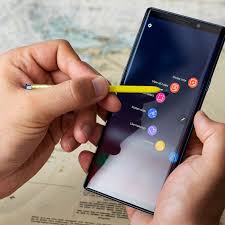
Breaking News
 Washington's Dept of Health just quietly issued a Covid vaccine standing order...
Washington's Dept of Health just quietly issued a Covid vaccine standing order...
 The day after his fiery Senate hearing, RFK Jr. revealed the exact reasons for firing CDC Director
The day after his fiery Senate hearing, RFK Jr. revealed the exact reasons for firing CDC Director
 47 shares a video about vaccines to Truth. Caption: "They're all poison."
47 shares a video about vaccines to Truth. Caption: "They're all poison."
 Stephen Goodson (1948-2018) served as director of the South African Reserve Bank from 2003 to 2012
Stephen Goodson (1948-2018) served as director of the South African Reserve Bank from 2003 to 2012
Top Tech News
 Methylene chloride (CH2Cl?) and acetone (C?H?O) create a powerful paint remover...
Methylene chloride (CH2Cl?) and acetone (C?H?O) create a powerful paint remover...
 Engineer Builds His Own X-Ray After Hospital Charges Him $69K
Engineer Builds His Own X-Ray After Hospital Charges Him $69K
 Researchers create 2D nanomaterials with up to nine metals for extreme conditions
Researchers create 2D nanomaterials with up to nine metals for extreme conditions
 The Evolution of Electric Motors: From Bulky to Lightweight, Efficient Powerhouses
The Evolution of Electric Motors: From Bulky to Lightweight, Efficient Powerhouses
 3D-Printing 'Glue Gun' Can Repair Bone Fractures During Surgery Filling-in the Gaps Around..
3D-Printing 'Glue Gun' Can Repair Bone Fractures During Surgery Filling-in the Gaps Around..
 Kevlar-like EV battery material dissolves after use to recycle itself
Kevlar-like EV battery material dissolves after use to recycle itself
 Laser connects plane and satellite in breakthrough air-to-space link
Laser connects plane and satellite in breakthrough air-to-space link
 Lucid Motors' World-Leading Electric Powertrain Breakdown with Emad Dlala and Eric Bach
Lucid Motors' World-Leading Electric Powertrain Breakdown with Emad Dlala and Eric Bach
 Murder, UFOs & Antigravity Tech -- What's Really Happening at Huntsville, Alabama's Space Po
Murder, UFOs & Antigravity Tech -- What's Really Happening at Huntsville, Alabama's Space Po
Supercapacitors power the Note 9 stylus -- but are they ready to replace batteries?

Samsung's latest Galaxy Note 9 has a nifty new feature: for the first time, the S Pen stylushas Bluetooth and can be charged instantly using a supercapacitor. Sticking the S Pen into the phone for 40 seconds gives it enough juice for 30 minutes of use, so battery life should no longer be a worry. But how exactly does this technology work? And what else could we use supercapacitors for?
Supercapacitors (or ultracapacitors) store energy and, in some ways, are the opposite of batteries. Batteries can hold a decent amount of energy but take a long time to charge, explains Thomas Miller, a materials scientist with the Electrochemical Innovation Lab at University College London. Supercapacitors charge so fast it seems instantaneous, taking just seconds or minutes versus hours. But they hold only a tiny amount of energy. Imagine getting shocked by static electricity — it happens very fast, but there's only a little bit of shock.

 Tiny briefcase engine boosts EV range beyond battery power
Tiny briefcase engine boosts EV range beyond battery power 

